Oh Crap Potty Training: A Guide for Parents
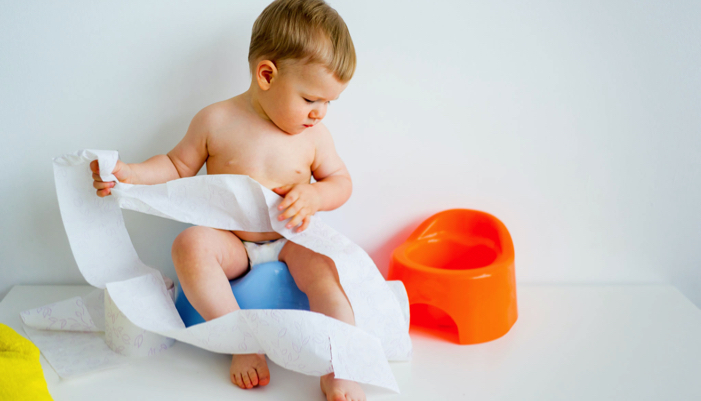
This post may contain affiliate links; please see our terms of use for details.
- The Oh Crap potty training method is made up of a series of potty training blocks.
- Each block focuses on a different toileting skill.
- You will need to clear your schedule and stay home for at least a day or two.
- There is no timeframe for completing this potty training method, though many parents can expect to be done within 3-7 days.
Oh crap! might be exactly what you’re thinking when you realize it’s time to potty train your toddler. This milestone can cause a lot of stress for parents.
Plus, there are so many different approaches to potty training, it’s hard to know which one is right for your family.
If you aren’t sure where to start, the Oh Crap potty training method offers a comprehensive guide to potty training your child one step at a time.
What is the Oh Crap Potty Training Method?
The Oh Crap potty training method comes from the book Oh Crap! Potty Training: Everything Modern Parents Need to Know to Do it Once and Do it Right by potty training and parenting expert Jamie Glowacki.
In this potty training method, your child will work through a series of six blocks. Each block focuses on specific potty training skills. Once your child has mastered each block, they will move onto the next.
Before you begin Oh Crap potty training, you will want to clear your calendar for at least a few days. While there isn’t a set time frame for this method, the first three blocks may take a few days to get through.
What is the best age to start the Oh Crap potty training method?
According to Glowacki, the best age to potty train your child is between 20 and 30 months of age. However, if you’ve missed this window of opportunity, it’s not too late to try Oh Crap potty training. It may just make things a little more challenging.
Most pediatricians agree that toddlers are generally physically ready to potty train after 18 months. Whether they are cognitively and emotionally ready by this age will depend on your child. While your child doesn’t need to show every sign of readiness, you’re more likely to be successful if they are ready.
Here are some signs of potty training readiness to look for:
- They are interested in the toilet. If your child is curious about using the potty, it may be a sign they are emotionally ready to start potty training.
- They are aware of when they poop or pee. Maybe your child goes to a designated place to poop or announces when they’re going to anyone who will listen—both of these are good signs.
- They can get dressed and undressed. This will help with preventing accidents and promoting independence when using the bathroom.
- They can follow simple directions. Being able to understand and follow simple directions will increase your chances of success.
- They don’t like wearing a wet or soiled diaper. If your little one is pulling at their diaper (or even taking it off) when it becomes wet or soiled, it’s probably a good idea to start potty training.
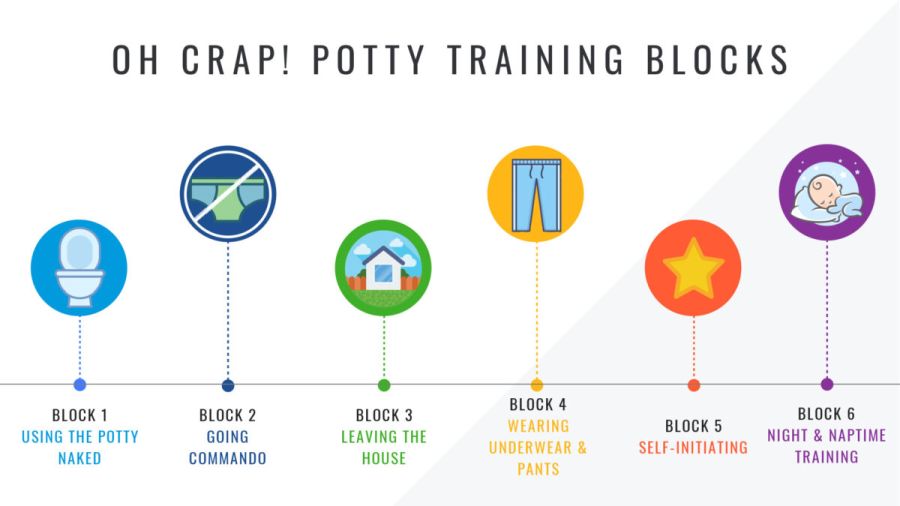
What Are the Oh Crap Potty Training Blocks?
When you use the Oh Crap method, your child will progress through six potty training blocks. Each block focuses on different potty training skills that will build off of eachother.
Block 1: Using the potty naked
Similar to many of the boot camp style potty training methods, the first block will introduce your child to the potty quickly. During this block, your child won’t wear underwear or pants, so you’ll need to stay home. This will also ensure that there is always a toilet nearby.
It’s okay at this point in time to watch your child closely and give them reminders to use the potty. They should get plenty of practice and quickly learn when to use the potty.
Of course, many children will have accidents at this point, and that’s totally okay! This will help them learn when to go on the potty. Gently remind your child that pee and poop go in the potty when this happens. Once your child is consistently using the potty (with reminders) and not having accidents, you can move on to Block 2.
Block 2: Going commando
During the second block, your child will have pants on but no underwear. You will continue to stay home and give reminders to use the potty. The only difference is your child will be getting used to having pants in the way when they have to go.
If you are having a lot of success at this point, you could try to do a short outing. You may want to try playing in the backyard or going to a nearby park.
Once your child is using the potty consistently and not having accidents while wearing pants, you’ve mastered this block and can move onto the next!
Block 3: Leaving the house
Block three is all about being able to use the potty anywhere you go. During block three, your child will still be going commando. Since they have already proven that they can successfully use the potty at home, it’s time to grab the travel potty and start going out.
Potty training in public restrooms can be challenging for many kids and their parents. Your toddler might be afraid of the sounds and people in the bathroom.
Just try to be patient and remember that you are almost there. When your child can go potty anywhere, it’s onto block four!
Block 4: Wearing underwear and pants
Now that you have made it through the first three blocks, you’ll put your child in their big kid underwear. Keep in mind that they might still need reminders to go potty. You can even use a potty training schedule if you need to.
Your child may need some additional help with the extra layers when it’s time to go potty. As long as they can go out fully dressed without having accidents, they are done with block four.
Block 5: Self-initiating
Block five is when you will finally want to cut back on prompting your little one to go potty. See if they remember to use the potty on their own. They may have some accidents at first, and that’s normal.
You can still give them the occasional reminder in the beginning, but take a step back. Once they are consistently self-initiating (with no reminders from you!), they have mastered this block. They are fully potty trained during the day!
Block 6: Night-time and naptime training
The next step is to work on getting them out of diapers during naps and night-time. For many children, this happens naturally after day training. Others may need some help.
If your child is already staying dry at night, switch to underwear and see how they do. If they are still having wet diapers overnight, Glowacki recommends night training. Once your child is making it through the night without accidents, you’re done!
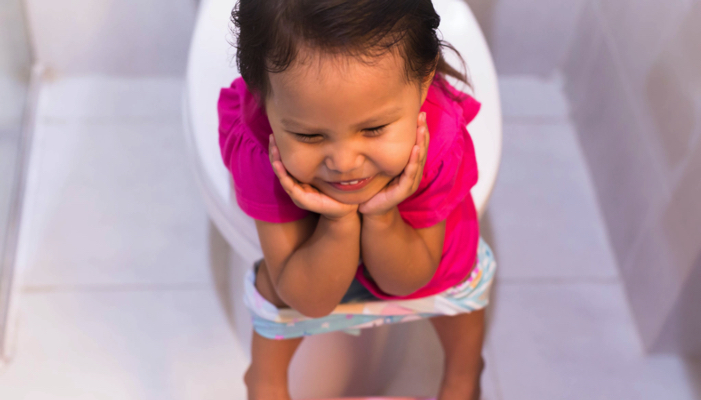
How Long Does the Oh Crap Potty Training Method Take?
Oh Crap Potty Training emphasizes the use of blocks rather than focusing on a time frame. Your child should have mastered each block before moving onto the next one. This can look different for different children.
However, Glowacki states that a realistic time frame to expect is 3-7 days. Potty training a special needs child may take longer.
Does Oh Crap potty training take longer for boys?
According to Glowacki, your child’s gender has nothing to do with how long it takes for them to potty train. Some boys will be easier to train than some girls, and vice versa.
She does state that since it’s easier for boys to pee “anywhere” that can make things a little easier sometimes. The Oh Crap potty training method recommends teaching boys to pee sitting down initially, though. This is just to limit unnecessary messes and clean-up.
Does the Oh Crap potty training method really work?
A lot of parents have success with this method of potty training! Since it focuses on skills rather than a specific timeframe, it can take some children longer to be fully trained than others. Keep this in mind so that you have realistic expectations.
It’s important to be consistent and not fall back on diapers while potty training with this method. Additionally, don’t move onto the next block until your child has mastered the one they are on.
What Happens After Oh Crap Potty Training?
After the first three blocks, your child will have the basics of potty training down. Some people consider the first three blocks to be the real potty training. During the last three blocks, your child will start wearing underwear and pants and getting out of the house, work on self-initiating, and night-time potty training.
Once you have finished block 6 and your child is no longer having accidents at night or during naps, you’re done! Congratulations!
What if accidents start again after finishing Oh Crap potty training?
It’s normal to have the occasional accident after potty training. According to the American Academy of Pediatrics, accidents after potty training aren’t usually a cause for concern. Night-time accidents are especially common up to age 5.
However, if your child begins to have accidents frequently, it’s best to talk to their pediatrician. Sometimes, this can signal a problem. These accidents are usually caused by physical or developmental issues that can be addressed with the help of your doctor.
If this happens, your child likely won’t need to start over with potty training. It may just require a temporary change to your normal routine. Remember to stay calm, and never punish your child for having accidents.
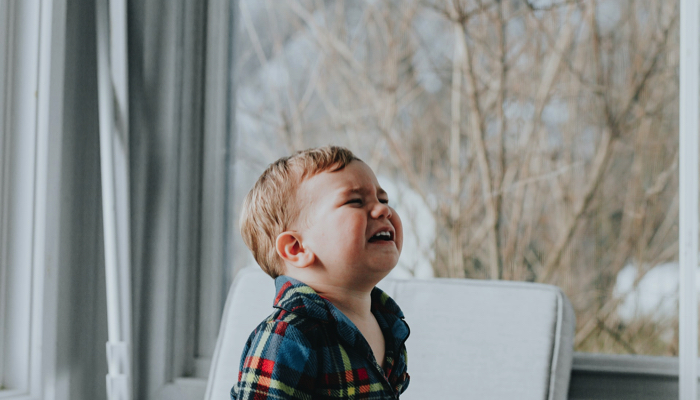
What If Oh Crap Potty Training Isn’t Working?
Sometimes potty training can begin to feel like a power struggle. Or maybe your toddler doesn’t seem to be catching on at all. It can be tough to determine whether you need to change your approach or take a break from potty training.
According to Glowacki, some children are never “ready” to potty train. If you’re using the Oh Crap Method, it’s best to train during that 20 to 30 month window if possible. Potty training a stubborn toddler may mean you need to be a little more persistent in your approach.
How do you know if Oh Crap potty training isn’t working?
Since the Oh Crap method has you wait until your child has mastered skills before moving onto the next block, there isn’t a set time frame that your child should be done. But you also can’t stay home forever if they aren’t getting through the first block.
While most children are physically ready to potty train by 20 to 30 months, some may not be emotionally ready. In this case, you may want to take a step back. Remember, if you are using this method, to try and pick it up again before your child is 30 months old.
Here are some signs that you may need to put potty training on hold:
- You’re not getting past the first block
- Your child refuses to use the potty (hiding to go or holding it)
- Your child doesn’t care if they have an accident
- They have an accident right after sitting on the potty
What are some mistakes parents make with Oh Crap potty training?
Most parents aren’t potty training experts, so it’s understandable if you make some mistakes. Some parents will fall back on diapers quickly or have unrealistic expectations. Check in to see if there is anything you are doing that may be getting in the way of your child’s success.
These are some of the biggest mistakes parents make with the Oh Crap method:
- Waiting until they are ready. According to Glowacki, while some children show every sign of being ready to potty train, others never will. While signs of readiness can increase your chances of success, they aren’t necessary.
- Giving a diaper when they ask for one. If your child feels like they have the option to go in a diaper, they may not feel motivated to potty train. Try not to fall back on diapers too quickly.
- Leaving the potty seat out. Some parents will leave a potty seat out in the living room for their child to get used to. Glowacki says that this is a mistake, and most children will end up seeing it as a place to put their toys rather than a toilet. Instead, keep a potty training seat in the bathroom.
- Using a rewards system. Glowacki advises against using rewards and potty training charts with stickers. Instead, give your child positive encouragement so they feel proud of what they’ve accomplished.
- Saying “it’s okay” to have an accident. Of course, you should never punish your child or make them feel bad for having an accident. However, telling them that it’s okay to have an accident may make them think they don’t need to use the potty. Instead, gently remind your child that poop and pee go in the potty.
How should you deal with an Oh Crap potty training regression?
Sometimes fully potty trained children will begin having accidents again. If you’ve made it through all six blocks of Oh Crap potty training and your child suddenly starts having accidents, you could be going through a regression.
A lot of things can cause a potty training regression. A move, a new sibling, starting school, or parents going through a divorce are all common causes of regressions. These can cause your child to feel stressed or distracted, which may affect their progress.
Some children may just need a little extra attention and a change to their routine for a few days to get back on track. You may have to go back to some basics like reminding them to go at specific times, though you won’t be starting over from scratch.
If your child is having accidents for a week or more, talk to their pediatrician. There could be other physical or developmental issues, such as:
- ADHD
- Autism
- Constipation
- Urinary tract infections (UTIs)
- Diabetes
- Spinal or urinary tract abnormalities
Sometimes there may be an underlying psychological reason for having accidents. This could include bullying or academic stress. Or they may just be afraid of missing out on activities. Talk to your child, but don’t make them feel bad for having accidents.
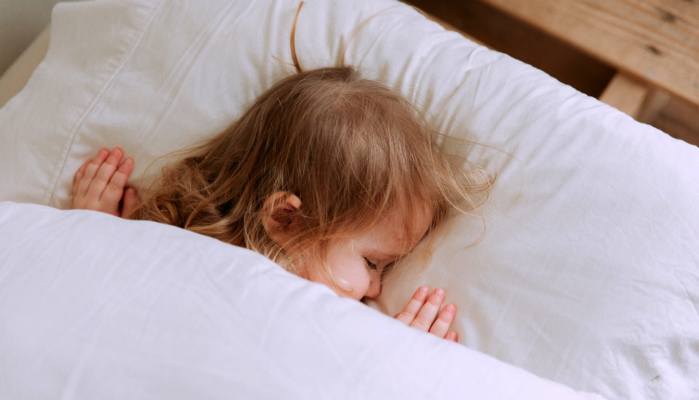
How Does Oh Crap Potty Training Work at Night and During Nap Times?
Night and nap training happen during the last block of the Oh Crap potty training method. Up until that point, you can keep your child in diapers or training pants when they sleep.
Once your child has finished the first five blocks, start checking their diaper when they wake up. Is it dry when they first get up from a nap or after a full night of sleep?
Some children will naturally stay dry overnight after they’ve completed daytime potty training. If that’s the case, go ahead and switch to underwear now. If your child is still going overnight, they may need to be night trained.
If you need to night train your child, here are a few things you can do:
- Have your child go before bed and as soon as they wake up. Although your child may not need prompting anymore during the day, they may need to “try” before bed and as soon as they wake up.
- Limit liquids in the last two hours before bed. Your child should certainly stay hydrated throughout the day, but it can help to cut back on liquids close to bedtime.
- Gently wake your child at night to go potty. For these night time wakings, keep the lights low and use a quiet voice so your child’s sleep isn’t disturbed. Waking generally isn’t necessary when potty training at nap time.
Remember that night training can take a little longer than day training for many children. Bedwetting is very common even through age 5.
Oh Crap Potty Training vs 3 Day Potty Training
While 3 day potty training is focused on completing potty training within a very short timeframe, Oh Crap potty training focuses on mastering skills. It is possible for your child to get through Oh Crap potty training in three days, but it’s not guaranteed.
Both of these boot camp methods require you to give up diapers cold turkey and stay home for at least a day or two watching your child closely. With the 3 day method, you will stay home for the entire three days, except for a short outing on day three.
The 3 day method doesn’t have guidelines or a timeframe for self-initiating or night training. Parents can choose to work on those skills throughout the entire three day process or after.
Oh Crap Potty Training Cheatsheet
| Block 1 | Using the potty naked |
| Block 2 | Going commando |
| Block 3 | Leaving the house |
| Block 4 | Wearing underwear and pants |
| Block 5 | Self-initiating |
| Block 6 | Night and naptime training |
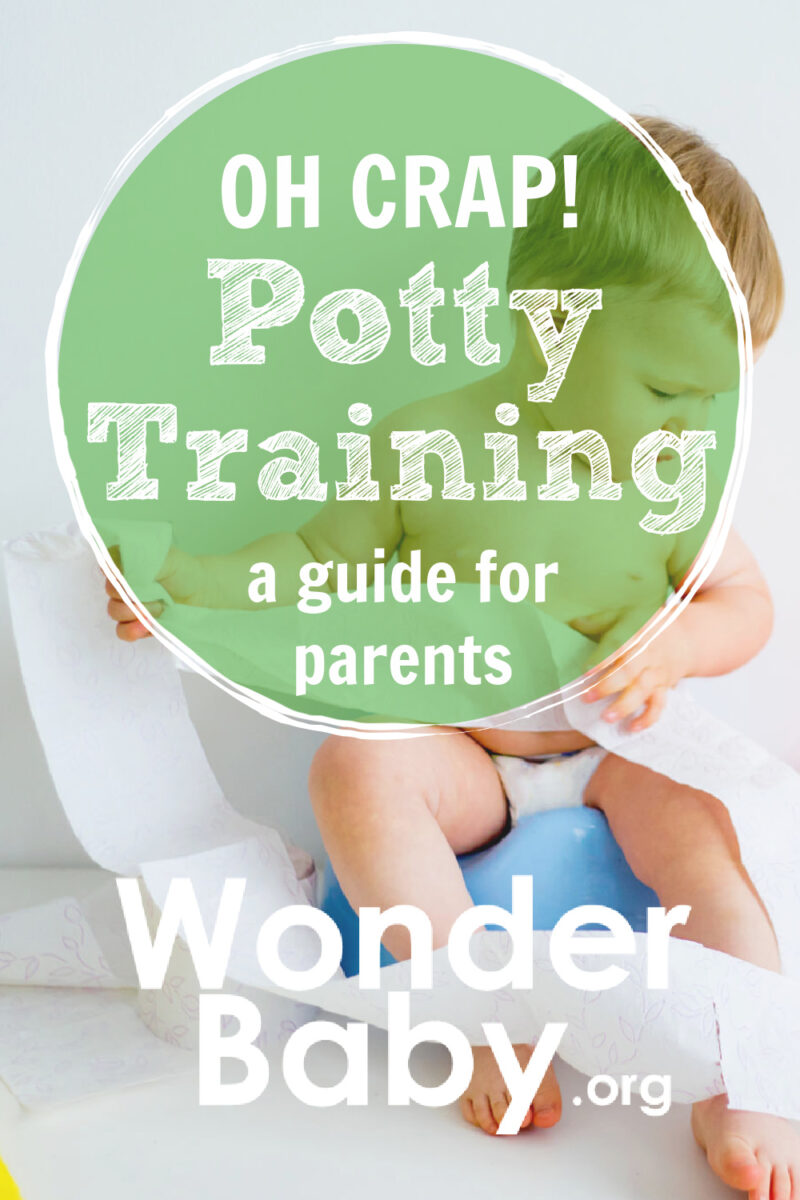
Related Posts
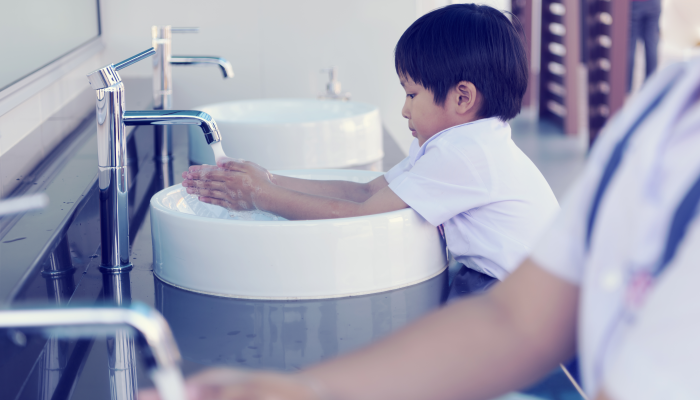
IEPs, Potty Training
7 Sample Toileting IEP Goals
Toileting IEP goals should address the specific needs and abilities of each child. Be flexible and patient as your child works on their toileting skills.
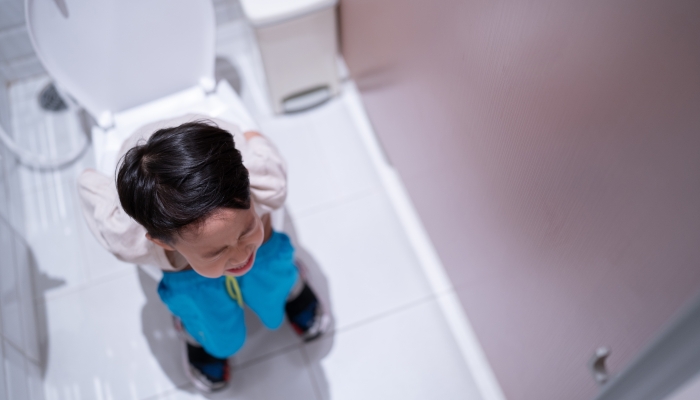
Potty Training
How To Deal With Constipation When Potty Training
Constipation is common amongst children of potty training age. Many children suffer from potty training constipation, but there are things you can do to help.
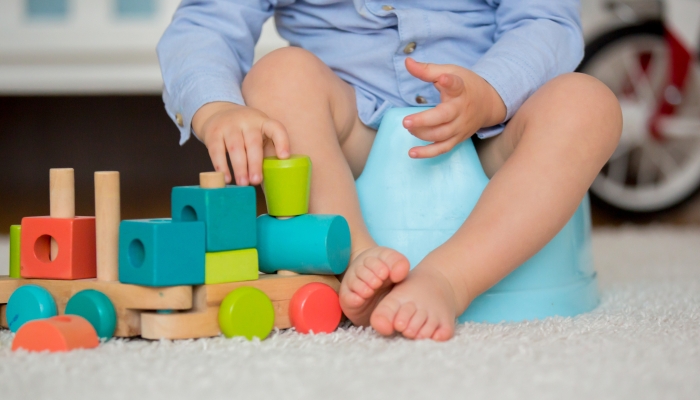
Potty Training
5 Potty Training Games To Make Potty Training Fun
Learning to use the toilet doesn’t have to feel like hard work. There are lots of potty training games you can play with your toddler to make learning fun.